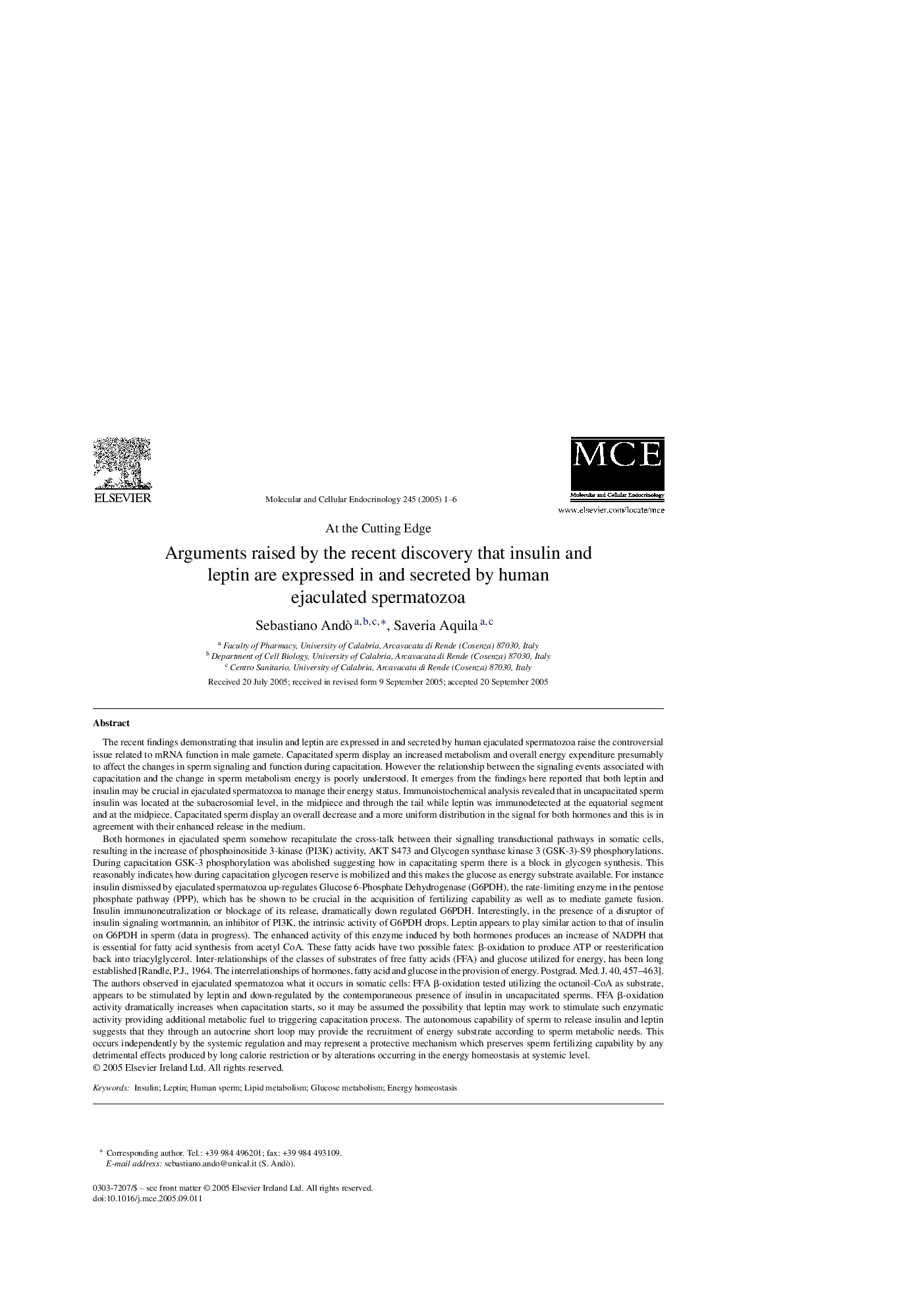| Article ID | Journal | Published Year | Pages | File Type |
|---|---|---|---|---|
| 9914849 | Molecular and Cellular Endocrinology | 2005 | 6 Pages |
Abstract
Both hormones in ejaculated sperm somehow recapitulate the cross-talk between their signalling transductional pathways in somatic cells, resulting in the increase of phosphoinositide 3-kinase (PI3K) activity, AKT S473 and Glycogen synthase kinase 3 (GSK-3)-S9 phosphorylations. During capacitation GSK-3 phosphorylation was abolished suggesting how in capacitating sperm there is a block in glycogen synthesis. This reasonably indicates how during capacitation glycogen reserve is mobilized and this makes the glucose as energy substrate available. For instance insulin dismissed by ejaculated spermatozoa up-regulates Glucose 6-Phosphate Dehydrogenase (G6PDH), the rate-limiting enzyme in the pentose phosphate pathway (PPP), which has be shown to be crucial in the acquisition of fertilizing capability as well as to mediate gamete fusion. Insulin immunoneutralization or blockage of its release, dramatically down regulated G6PDH. Interestingly, in the presence of a disruptor of insulin signaling wortmannin, an inhibitor of PI3K, the intrinsic activity of G6PDH drops. Leptin appears to play similar action to that of insulin on G6PDH in sperm (data in progress). The enhanced activity of this enzyme induced by both hormones produces an increase of NADPH that is essential for fatty acid synthesis from acetyl CoA. These fatty acids have two possible fates: β-oxidation to produce ATP or reesterification back into triacylglycerol. Inter-relationships of the classes of substrates of free fatty acids (FFA) and glucose utilized for energy, has been long established [Randle, P.J., 1964. The interrelationships of hormones, fatty acid and glucose in the provision of energy. Postgrad. Med. J. 40, 457-463]. The authors observed in ejaculated spermatozoa what it occurs in somatic cells: FFA β-oxidation tested utilizing the octanoil-CoA as substrate, appears to be stimulated by leptin and down-regulated by the contemporaneous presence of insulin in uncapacitated sperms. FFA β-oxidation activity dramatically increases when capacitation starts, so it may be assumed the possibility that leptin may work to stimulate such enzymatic activity providing additional metabolic fuel to triggering capacitation process. The autonomous capability of sperm to release insulin and leptin suggests that they through an autocrine short loop may provide the recruitment of energy substrate according to sperm metabolic needs. This occurs independently by the systemic regulation and may represent a protective mechanism which preserves sperm fertilizing capability by any detrimental effects produced by long calorie restriction or by alterations occurring in the energy homeostasis at systemic level.
Related Topics
Life Sciences
Biochemistry, Genetics and Molecular Biology
Cell Biology
Authors
Sebastiano Andò, Saveria Aquila,
